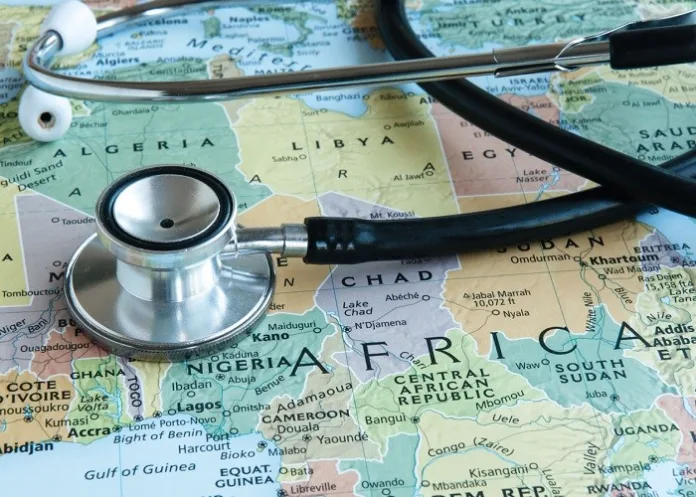With about 80% of people in Africa using traditional medicines for healthcare – and about 60% of South Africans relying on it – integrating these practices into modern healthcare systems can harness centuries of indigenous knowledge, increasing treatment options and providing better healthcare.
Pharmacist and academic Zelna Booth, who has a research focus on traditional medicinal plant use in South Africa, writes in The Conversation that the growing recognition of traditional medicine resulted in the first WHO global summit on the topic last month, themed “Health and Well-being for All”.
Conventional South African healthcare facilities struggle to cope with extremely high patient numbers, with the failure to meet the basic standards of healthcare – increasing morbidity and mortality rates – posing a very real threat to the economy.
But recognition of traditional medicine as an alternative or joint source of healthcare to that of standard, conventional medicine has been challenging, due to the absence of scientific research establishing and documenting the safety and effectiveness of these medicines, along with the lack of regulatory controls.
Traditional medicine encompasses various healthcare practices aimed at either preventing or treating acute or chronic complaints through the application of indigenous knowledge, beliefs and approaches. It incorporates the use of plant, animal and mineral-based products. Plant-derived products form most of the treatment regimens.
South Africa is rich in indigenous medicinal fauna and flora, with about 2 000 species of plants traded for medicinal purposes. KwaZulu-Natal, Gauteng, Eastern Cape, Mpumalanga and Limpopo are trading “hotspots, with the harvested plants most often sold at traditional muthi markets.
Which plants?
Medicinal plants most popularly traded include buchu, bitter aloe, African wormwood, honeybush, devil’s claw, hoodia, African potato, fever tea, African geranium, African ginger, cancer bush, pepperbark tree, milk bush – and the very popular rooibos tea.
The most commonly traded medicinal plants are listed below, with their traditional uses:
Buchu – Urinary tract infections; skin infections; sexually transmitted infections; fever; respiratory tract infections; high blood pressure; gastrointestinal complaints.
Bitter aloe – Skin infections; skin inflammation; minor burns.
African wormwood – Respiratory tract infections; diabetes, urinary tract disorders.
Honeybush – Cough; gastrointestinal issues; menopausal symptoms.
Devil’s claw – Inflammation; arthritis; pain.
Hoodia – Appetite suppressant.
African potato – Arthritis; diabetes; urinary tract disorders; tuberculosis; prostate disorders.
Fever tea – Respiratory tract infections; fever; headaches.
African geranium – Respiratory tract infections.
African ginger – Respiratory tract infections; asthma.
Cancer bush – Respiratory tract infections; menstrual pain.
Pepperbark tree – Respiratory tract infections; sexually transmitted infections.
Milk bush – Pain; ulcers; skin conditions.
Rooibos – Inflammation; high cholesterol; high blood pressure.
Traditional medicine is used is many ways – a drop in the eye or the ear, a poultice applied to the skin, a boiled preparation for inhalation or a tea brewed for oral administration.
Roots, bulbs and bark are used most often, and leaves less frequently. Roots are available throughout the year. There’s also a belief that the roots have the strongest concentration of “medicine”. Harvesting of the roots, however, poses concerns about the conservation of these medicinal plants.
Obstacles
The limited research investigating possible interactions if a patient uses both traditional and conventional medicine is a concern.
During the pandemic, many patients used traditional remedies for the prevention of infection or treatment. Understanding which are being used, and how, their therapeutic effects in the human body, and how they interact with conventional medicines, would help determine safety of their combined use.
Certain combinations may have advantageous interactions, increasing the efficacy or potency of the medicines and allowing for reduced dosages, thereby reducing potential toxicity. These combinations could assist in the development of new pharmaceutical formulations.
Sharing information
The WHO, in its Traditional Medicine Strategy for 2014-2023 report, emphasised the need for using traditional medicine to achieve increased healthcare.
Key role-players from both systems of healthcare need to be able to share information freely.
The need for policy development is key. Both conventional and traditional medicine practitioners would need to be aware of and engage with patients on all the medicines they are taking.
Patients often seek treatment from both conventional and traditional sources, which can lead to side effects or duplication in medications.
A comprehensive understanding of a patient’s health profile makes care easier, could prevent treatment failures, promote patient safety, prevent adverse interactions and minimise risks.
Zelna Booth is a pharmacist and academic lecturer (Pharmacy Practice Division), Department of Pharmacy and Pharmacology, at the University of the Witwatersrand.
WHO traditional meds
See more from MedicalBrief archives:
WHO holds first traditional medicine summit
The challenge of trialling Africa’s traditional medicines
UFS: R17m grant for Indigenous Knowledge System

